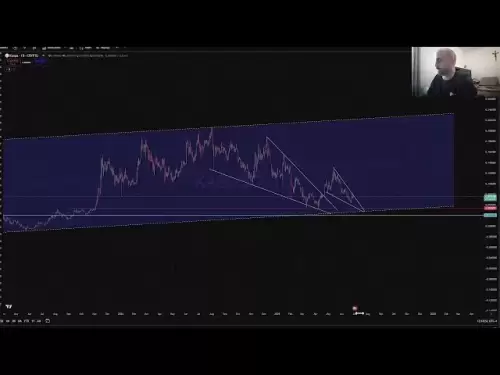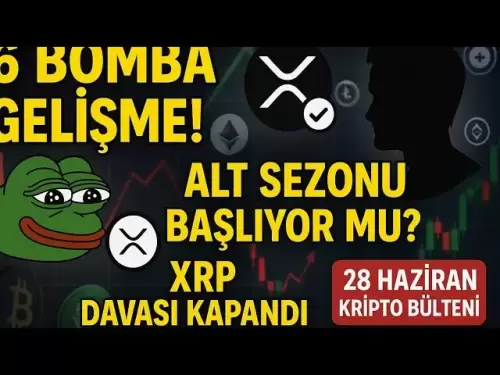-
 Bitcoin
Bitcoin $107,341.7259
0.15% -
 Ethereum
Ethereum $2,438.6204
0.70% -
 Tether USDt
Tether USDt $1.0003
-0.02% -
 XRP
XRP $2.1866
1.94% -
 BNB
BNB $649.0952
0.36% -
 Solana
Solana $150.9602
5.63% -
 USDC
USDC $0.9999
0.00% -
 TRON
TRON $0.2742
0.40% -
 Dogecoin
Dogecoin $0.1645
1.93% -
 Cardano
Cardano $0.5669
1.18% -
 Hyperliquid
Hyperliquid $37.8286
4.19% -
 Bitcoin Cash
Bitcoin Cash $491.4669
-2.74% -
 Sui
Sui $2.8150
3.06% -
 Chainlink
Chainlink $13.4184
2.91% -
 UNUS SED LEO
UNUS SED LEO $9.0809
0.27% -
 Avalanche
Avalanche $18.0295
2.60% -
 Stellar
Stellar $0.2396
1.19% -
 Toncoin
Toncoin $2.8587
0.13% -
 Shiba Inu
Shiba Inu $0.0...01160
2.59% -
 Litecoin
Litecoin $86.4192
1.45% -
 Hedera
Hedera $0.1486
1.19% -
 Monero
Monero $308.4324
0.87% -
 Polkadot
Polkadot $3.4202
1.43% -
 Bitget Token
Bitget Token $4.6436
-0.34% -
 Dai
Dai $0.9998
-0.02% -
 Ethena USDe
Ethena USDe $1.0002
0.00% -
 Uniswap
Uniswap $7.1527
3.29% -
 Pi
Pi $0.5357
-8.45% -
 Pepe
Pepe $0.0...09588
4.61% -
 Aave
Aave $259.9759
0.81%
What is the difference between OKX's perpetual contract and delivery contract?
OKX offers perpetual and delivery contracts; perpetuals settle via funding rates, while deliveries require crypto settlement at expiry, impacting trading strategies and risk.
Apr 02, 2025 at 07:42 am
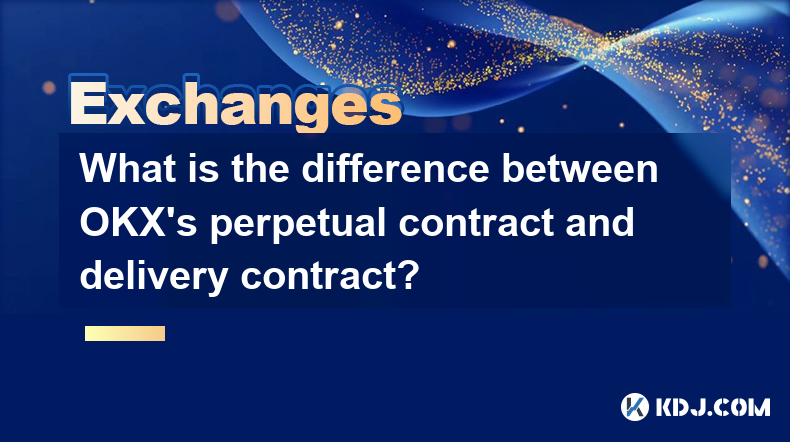
Understanding OKX Perpetual and Delivery Contracts
OKX, a prominent cryptocurrency exchange, offers both perpetual and delivery contracts, both allowing traders to speculate on the price movement of cryptocurrencies. However, they differ significantly in their settlement mechanisms and overall risk profiles. Understanding these differences is crucial for making informed trading decisions.
Perpetual contracts, also known as inverse perpetual contracts on OKX, are designed to mimic the spot market experience, allowing traders to hold positions indefinitely without an expiry date. This contrasts sharply with delivery contracts, which have a defined expiry date. The price of a perpetual contract is influenced by funding rates, a mechanism that adjusts the contract price to track the underlying asset's spot price. This helps prevent large price discrepancies between the perpetual contract and the spot market.
Delivery contracts, on the other hand, function more like traditional futures contracts. They have a specific expiration date, at which point the contract holder must either deliver or receive the underlying cryptocurrency. This introduces a significant element of timing risk, as the trader needs to manage their position before the expiry date to avoid physical settlement.
Key Differences between OKX Perpetual and Delivery Contracts
One of the most significant differences lies in their settlement. Perpetual contracts settle continuously through funding rates, while delivery contracts settle at a specific expiry date, requiring the delivery or receipt of the underlying cryptocurrency. This difference significantly impacts the trading strategy and risk management involved.
Another key difference is the time horizon. Perpetual contracts are suitable for traders with a longer-term outlook, while delivery contracts are better suited for traders with a shorter-term perspective aligned with the contract's expiry date. The choice depends entirely on the trader's trading style and risk tolerance.
Furthermore, leverage is another differentiating factor. Both perpetual and delivery contracts offer leverage, but the levels and regulations might differ slightly depending on the specific contract and OKX's policies at the time. It's crucial to understand the leverage implications for each contract type before trading.
Trading Strategies and Risk Management
The choice between a perpetual contract and a delivery contract significantly impacts trading strategies. For instance, scalping strategies are often more suitable for perpetual contracts due to their continuous nature, whereas arbitrage opportunities might arise between delivery contracts and the spot market closer to the expiry date.
Risk management also varies. With perpetual contracts, the risk is largely driven by price fluctuations and funding rates. However, with delivery contracts, the risk also includes the timing of the expiry date and the potential need for physical settlement, which can be complex and involve additional costs.
Here's a breakdown of how to approach each contract type:
Perpetual Contracts: Focus on managing leverage and funding rate exposure. Regularly monitor market sentiment and adjust positions accordingly. Consider using stop-loss orders to limit potential losses.
Delivery Contracts: Pay close attention to the expiry date. Develop a clear exit strategy before the expiry date to avoid physical settlement. Manage risk by hedging or offsetting positions.
Understanding Funding Rates in OKX Perpetual Contracts
Funding rates are a critical aspect of perpetual contracts. They are periodic payments made between long and short traders to keep the contract price aligned with the underlying asset's spot price. Positive funding rates mean long positions pay short positions, while negative funding rates mean short positions pay long positions. Understanding how funding rates work is crucial for effective perpetual contract trading.
The magnitude of the funding rate depends on several factors, including supply and demand for the contract, and the difference between the contract price and the spot price. High funding rates can significantly impact profitability, especially for long-term positions.
Expiry Dates and Settlement in OKX Delivery Contracts
Delivery contracts have a predetermined expiry date. At expiry, the contract holder has to settle the contract. This involves either delivering the underlying cryptocurrency if they hold a long position, or receiving the underlying cryptocurrency if they hold a short position.
However, most traders choose to close their positions before the expiry date rather than deal with the complexities of physical settlement. This is particularly important to avoid potential issues related to transferring and storing large quantities of cryptocurrency.
Frequently Asked Questions
Q: Which contract type is riskier?
A: Both contract types carry inherent risks. Perpetual contracts expose traders to funding rate fluctuations and unlimited potential losses if leverage is used improperly. Delivery contracts introduce the risk of needing to manage positions before expiry to avoid physical settlement. The riskier option depends on the trader's risk tolerance and trading strategy.
Q: Can I use leverage on both contract types?
A: Yes, both perpetual and delivery contracts on OKX typically allow the use of leverage. However, the available leverage levels may differ between the two contract types and can change based on OKX's policies. Always check the specific contract details before trading.
Q: What is the best contract type for beginners?
A: For beginners, it's generally recommended to start with smaller positions and gain experience with perpetual contracts before venturing into delivery contracts. The simpler settlement mechanism and continuous nature of perpetual contracts make them slightly more approachable for newcomers.
Q: How do I choose between a perpetual and delivery contract?
A: The choice depends on your trading horizon and risk tolerance. If you have a longer-term view and are comfortable with funding rate fluctuations, perpetual contracts might be suitable. If you have a shorter-term perspective and prefer a defined settlement date, delivery contracts might be more appropriate. Consider your trading style and risk appetite carefully.
Q: What happens if I don't close my delivery contract before expiry?
A: If you don't close your delivery contract before the expiry date, you will be subject to the physical settlement process. This involves either delivering or receiving the underlying cryptocurrency, which can be complex and involve additional costs and logistical challenges. It's strongly advised to close positions before expiry.
Disclaimer:info@kdj.com
The information provided is not trading advice. kdj.com does not assume any responsibility for any investments made based on the information provided in this article. Cryptocurrencies are highly volatile and it is highly recommended that you invest with caution after thorough research!
If you believe that the content used on this website infringes your copyright, please contact us immediately (info@kdj.com) and we will delete it promptly.
- Trump, Bitcoin, and Peter Schiff: A New York Minute on Crypto Chaos
- 2025-06-29 12:30:12
- BTC Price, BlackRock ETF, Fed Signals: Decoding the Crypto Crossroads
- 2025-06-29 12:30:12
- SEI Price Skyrockets Amid ETF Hype and Bullish Uptrend: What's Next?
- 2025-06-29 12:50:11
- Bitcoin Mining, Cryptocurrency, and Blockchain: A New York State of Mind
- 2025-06-29 13:10:11
- Dogecoin's Double Bottom: Is an Explosive Move Imminent?
- 2025-06-29 12:55:11
- Kitten Craze Online: Hunting for the Purr-fect Coin Purse
- 2025-06-29 10:30:12
Related knowledge
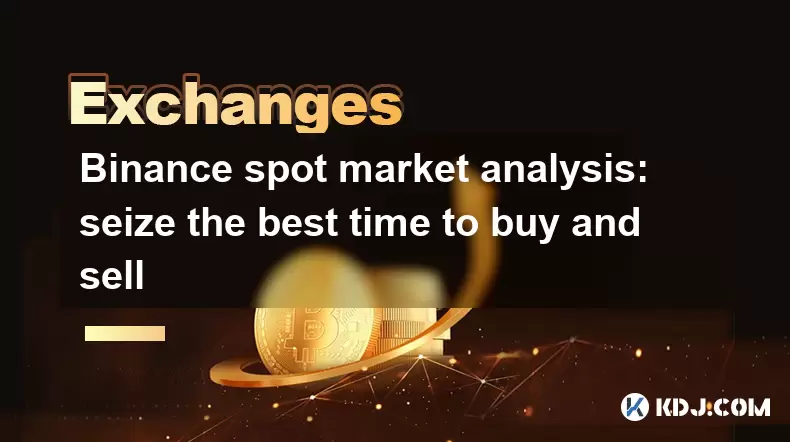
Binance spot market analysis: seize the best time to buy and sell
Jun 19,2025 at 04:56pm
Understanding the Binance Spot MarketThe Binance spot market is one of the most popular platforms for cryptocurrency trading globally. It allows users to trade digital assets at current market prices, making it essential for traders aiming to buy low and sell high. Unlike futures or margin trading, spot trading involves direct ownership of the asset aft...
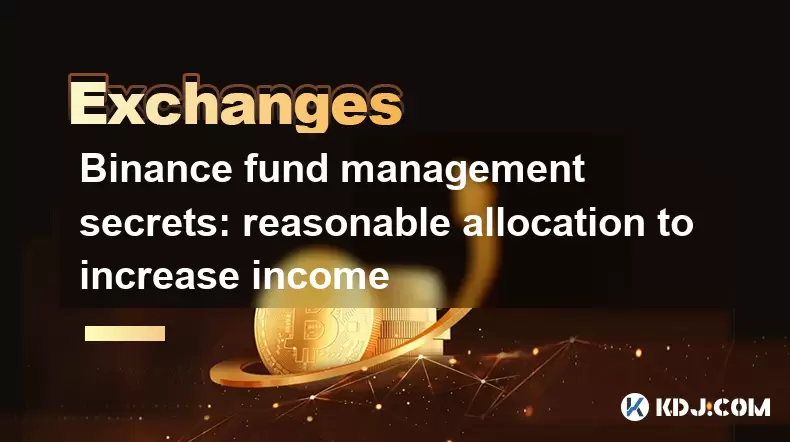
Binance fund management secrets: reasonable allocation to increase income
Jun 22,2025 at 02:29pm
Understanding Binance Fund ManagementBinance fund management involves strategic allocation of your cryptocurrency assets to optimize returns while managing risk. The key to successful fund management lies in understanding how different investment options on the Binance platform can be utilized to create a diversified portfolio. This includes spot tradin...
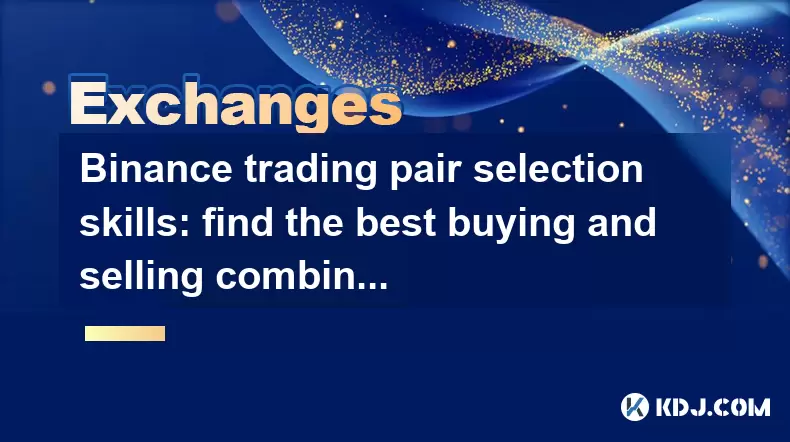
Binance trading pair selection skills: find the best buying and selling combination
Jun 23,2025 at 02:49am
Understanding the Basics of Trading Pairs on BinanceBefore diving into trading pair selection skills, it's essential to understand what a trading pair is. On Binance, a trading pair refers to two cryptocurrencies that can be traded against each other. For example, BTC/USDT means Bitcoin is being traded against Tether. Each trading pair has its own liqui...
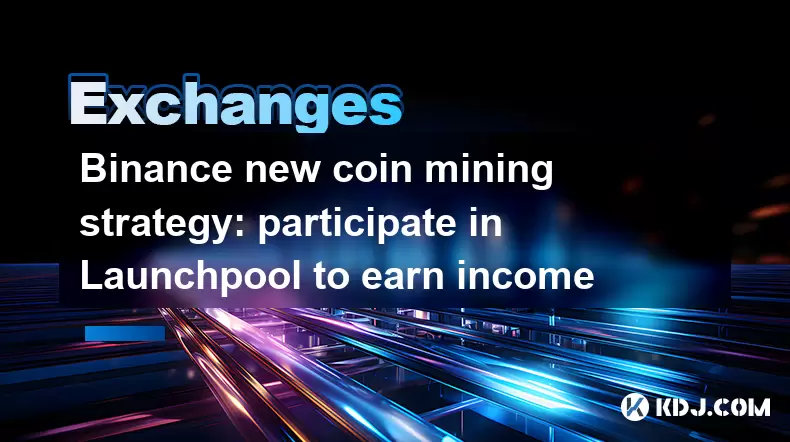
Binance new coin mining strategy: participate in Launchpool to earn income
Jun 23,2025 at 11:56am
What is Binance Launchpool and how does it work?Binance Launchpool is a feature introduced by the world’s largest cryptocurrency exchange, Binance, to allow users to earn new tokens through staking. This platform enables users to stake their existing cryptocurrencies (such as BNB, BUSD, or other supported assets) in exchange for newly launched tokens. T...
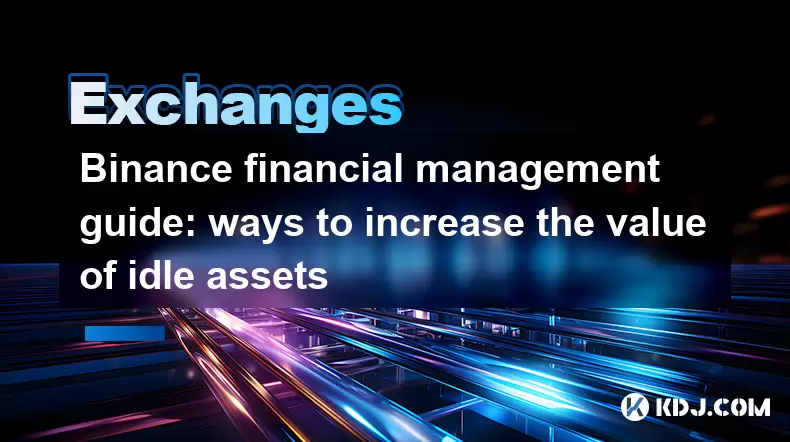
Binance financial management guide: ways to increase the value of idle assets
Jun 19,2025 at 11:22pm
Understanding Idle Assets in the Cryptocurrency SpaceIn the fast-paced world of cryptocurrency, idle assets refer to digital currencies that are not actively being used for trading, staking, or yield farming. Holding these funds in a wallet without utilizing them means missing out on potential growth opportunities. Binance, as one of the leading platfor...
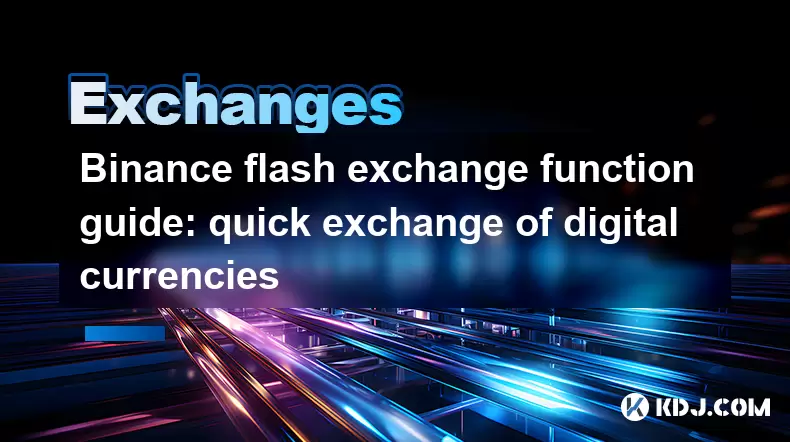
Binance flash exchange function guide: quick exchange of digital currencies
Jun 23,2025 at 12:29pm
What is the Binance Flash Exchange Function?The Binance Flash Exchange function is a powerful tool designed to allow users to instantly swap between supported cryptocurrencies without the need for placing traditional buy/sell orders. This feature simplifies the trading process by offering a direct exchange mechanism, eliminating the requirement to conve...

Binance spot market analysis: seize the best time to buy and sell
Jun 19,2025 at 04:56pm
Understanding the Binance Spot MarketThe Binance spot market is one of the most popular platforms for cryptocurrency trading globally. It allows users to trade digital assets at current market prices, making it essential for traders aiming to buy low and sell high. Unlike futures or margin trading, spot trading involves direct ownership of the asset aft...

Binance fund management secrets: reasonable allocation to increase income
Jun 22,2025 at 02:29pm
Understanding Binance Fund ManagementBinance fund management involves strategic allocation of your cryptocurrency assets to optimize returns while managing risk. The key to successful fund management lies in understanding how different investment options on the Binance platform can be utilized to create a diversified portfolio. This includes spot tradin...

Binance trading pair selection skills: find the best buying and selling combination
Jun 23,2025 at 02:49am
Understanding the Basics of Trading Pairs on BinanceBefore diving into trading pair selection skills, it's essential to understand what a trading pair is. On Binance, a trading pair refers to two cryptocurrencies that can be traded against each other. For example, BTC/USDT means Bitcoin is being traded against Tether. Each trading pair has its own liqui...

Binance new coin mining strategy: participate in Launchpool to earn income
Jun 23,2025 at 11:56am
What is Binance Launchpool and how does it work?Binance Launchpool is a feature introduced by the world’s largest cryptocurrency exchange, Binance, to allow users to earn new tokens through staking. This platform enables users to stake their existing cryptocurrencies (such as BNB, BUSD, or other supported assets) in exchange for newly launched tokens. T...

Binance financial management guide: ways to increase the value of idle assets
Jun 19,2025 at 11:22pm
Understanding Idle Assets in the Cryptocurrency SpaceIn the fast-paced world of cryptocurrency, idle assets refer to digital currencies that are not actively being used for trading, staking, or yield farming. Holding these funds in a wallet without utilizing them means missing out on potential growth opportunities. Binance, as one of the leading platfor...

Binance flash exchange function guide: quick exchange of digital currencies
Jun 23,2025 at 12:29pm
What is the Binance Flash Exchange Function?The Binance Flash Exchange function is a powerful tool designed to allow users to instantly swap between supported cryptocurrencies without the need for placing traditional buy/sell orders. This feature simplifies the trading process by offering a direct exchange mechanism, eliminating the requirement to conve...
See all articles























